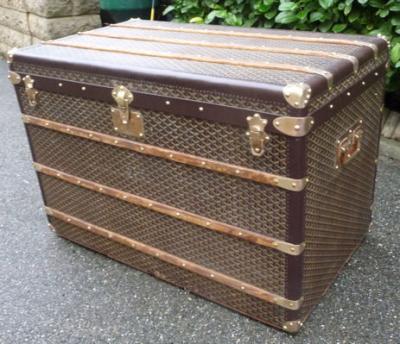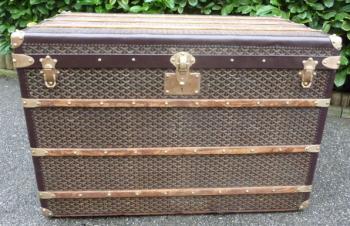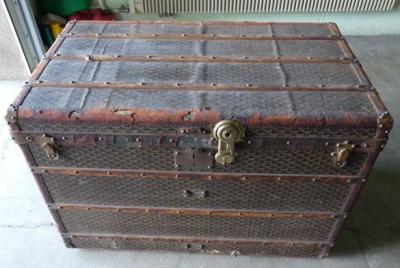
A trunk enthusiast from Luxembourg sent us photos of the hereunder trunk:
- Blistered canvas
- Dry leather bindings, burnt or missing
- The lock is out of order and it is not the original one
Some e-mails later, the customer came to our place with his trunk. It was decided to undertake a complete restoration of the trunk. The customer was giving us carte blanche.
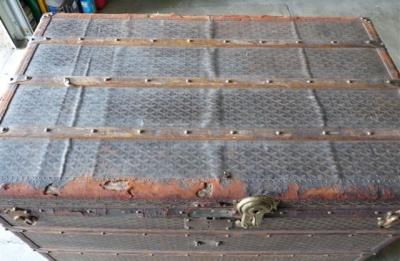
It is the progress of this restoration that I propose you to follow.
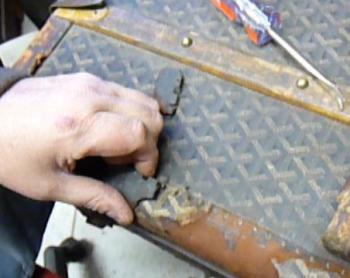 The first step was to disassemble the leather bindings, while taking care to keep the original tacks (2 tacks a centimeter, around 2'800 tacks...)
The first step was to disassemble the leather bindings, while taking care to keep the original tacks (2 tacks a centimeter, around 2'800 tacks...)
At the same time, we went to a leather tanner in order to choose long enough and good-quality hides for making the new bindings.
While disassembling goes on, we also take care to keep:
- the 8 corners fixed with 7 nails each
- the 18 L-shaped angle-brackets of the slats
- the 4 L-shaped angle-brackets of the lid
Etc...
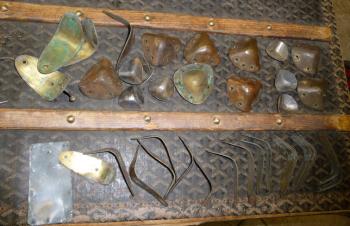
The second step consists in disassembling the metal valance of the lid.
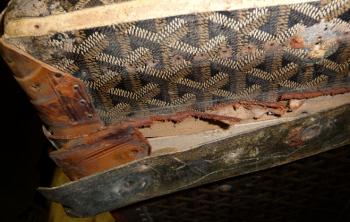
On this Goyard-branded trunk, the thick metal valance is coated with leather, partly before and partly after fixing the valance.
The valance is then coated again, from the interior, for the lid to be watertight.
A thin cardboard makes up the differences in thickness, so that the clasp male part can perfectly joint the female part.
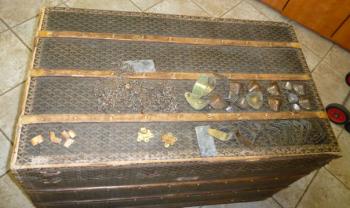
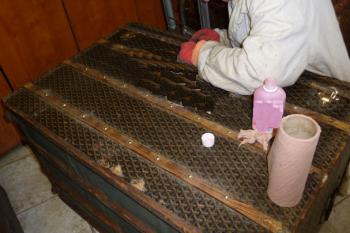
The cleaning of the brass parts is made in two stages and split in 2.
On the one hand, we clean all that is not disassembled, and on the other hand, we clean all the dismantled parts (tacks, nails,...)
This cleaning is done after wiping the trunk with a damp cloth. Once the trunk will be completely finished, it will be cleaned again from A to Z more thoroughly.
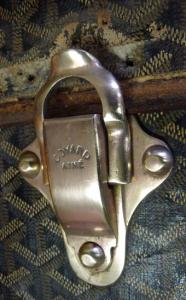
Once disassembled, the trunk is carefully washed (not show).
The wooden parts that are cracked or broken are repaired, glued, crimped (not shown).
The original canvas is partly or totally unstuck before it is installed back.
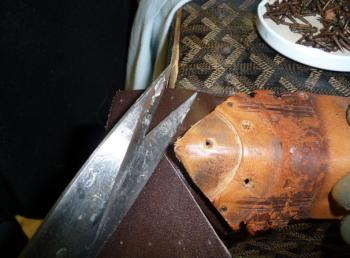
Now we have to reassemble the trunk..., which is much more technical than disassembling.
The nails are untwisted and cleaned one by one; the other parts a well.
The metal valance is straightened out with a sledgehammer on an anvil.
The leather strips are cut and prepared, then holes are pre-drilled every 5mm, like on the original ones.
When they exist, we use the leather corners as cutting patterns to make the new corners of the bindings. These corners will be partly hidden by those in brass but they need to be well adjusted because, on this trunk, the corners are 50mm whereas the leather bindings are 60mm...
Then we put back on the spare parts, either by cold riveting the tacks, either by bending them over in the way trunk makers did.
We also put back the metal valance that we have coated with leather beforehand; and we place the male parts of the clasp.
Lastly, for this order, we have had to make-to-measure a lock hasp on the basis of an existing one. Indeed, the trunk had no hasp and we did not have the right piece in our stocks.
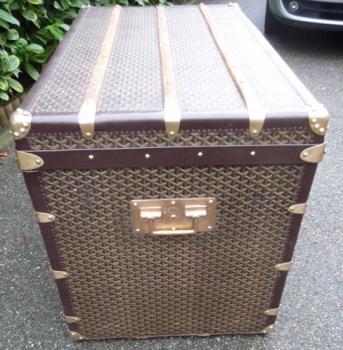
. 